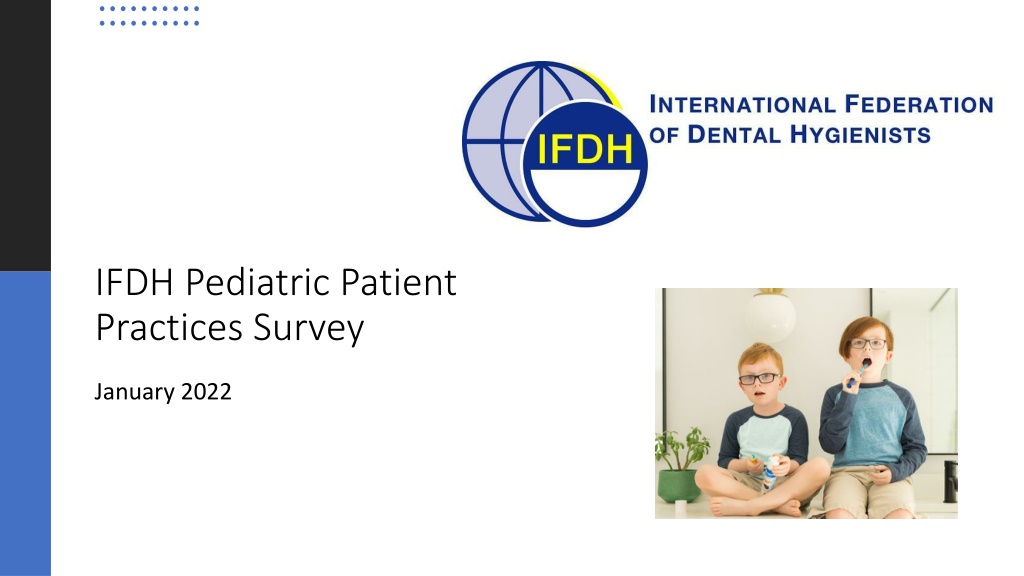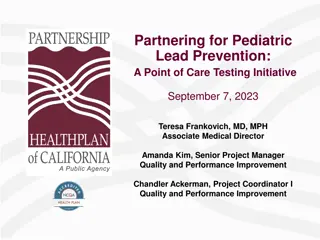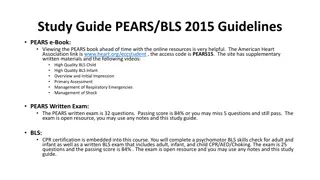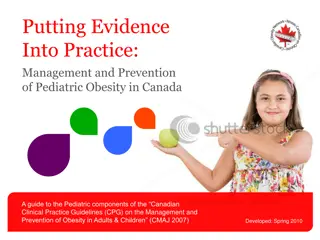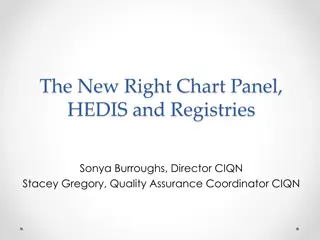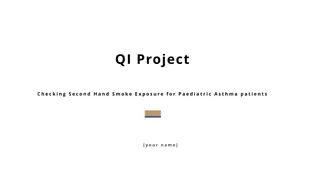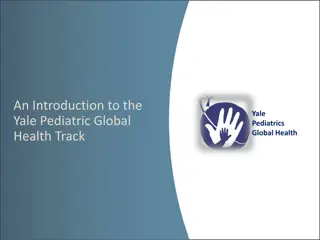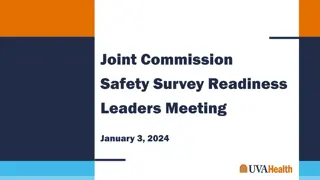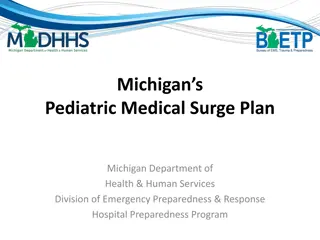IFDH Pediatric Patient Practices Survey January 2022
Survey conducted by IFDH in January 2022 to understand the practices of dental hygienists with pediatric patients aged 6 to 12. The survey gathered responses from 367 participants across 25 countries, with a focus on demographics, work settings, educational backgrounds, and frequency of seeing pediatric patients. Key findings include the majority working in private practice settings, having Bachelor's degrees, and seeing pediatric patients at least once a week. Opportunities for future educational programs were identified based on the survey results.
Download Presentation

Please find below an Image/Link to download the presentation.
The content on the website is provided AS IS for your information and personal use only. It may not be sold, licensed, or shared on other websites without obtaining consent from the author. Download presentation by click this link. If you encounter any issues during the download, it is possible that the publisher has removed the file from their server.
E N D
Presentation Transcript
IFDH Pediatric Patient Practices Survey January 2022
Survey Background Survey #5 in a series supported by Procter & Gamble conducted in November 2021. Objectives: To better understand global dental hygienists practices regarding pediatric patients 6 to 12 years old. To identify opportunities for future educational programs. Survey flow: IFDH 34 national associations individual members.
367 respondents from 25 countries Top countries South Africa 5% Israel Norway 4% Belgium 4% Singapore 4% Italy USA Canada 12% Portugal11% Australia 6% 19% 13% 5% Countries with < 2% : Ireland, Malta, Nepal, Lithuania, Sweden, United Kingdom, Latvia, Slovak Republic, Spain, Cameroon, Denmark, New Zealand, Russia, Switzerland, Peru
Demographics 25% More than 25 years Years of dental hygiene experience 20% 16 to 25 years 32% 5 to 15 years Skewed slightly towards 15 years of experience or less 22% Less than 5 years
Other, please specify Educational Setting Corporate Practice Hospital Clinic Community/Public Health Private Practice, Specialist Private Practice, General Dentistry Work Setting 51.% Private Practice, General Dentistry 18.5% Private Practice, Specialist Almost 70% are in a private practice setting. 13.4% Community/Public Health 5.2% Hospital Clinic This is an important factor to consider when reviewing the survey results. 4.6% Corporate Practice 3.8% Educational Setting 3.5% Other, please specify
Doctoral Degree in Education Certificate of Competence Doctoral Degree in Science or Health Associate Degree Advanced Diploma Master s Degree Diploma Bachelor s Degree Bachelor s Degree 38.2% Education Diploma 25.3% Master s Degree 13.6% Advanced Diploma 9.5% Majority have Bachelor s Degree or Diploma Associate Degree 8.7% Doctoral Degree in Science or Health 2.2% Certificate of Competence 1.9% Doctoral Degree in Education 0.5%
How often do you see pediatric patients who are 6 to 12 years old? How often do you see pediatric patients who are 6 to 12 years old? About 60% see pediatric patients at least once a week Every day 23.7% 1 - 6 times a week 37.1% 286 (78%) respondents who see children at least once a month responded to the remaining survey questions. 1 - 3 times a month 17.2% Less than once a month 22.1%
Among your pediatric patients who are 6 to 12 years old, how Among your pediatric patients who are 6 to 12 years old, how many present with the following diseases/conditions? many present with the following diseases/conditions? Virtually all Most Some Few Virtually none Top conditions affecting virtually all or most pediatric patients: -Poor plaque control, 55% -Gingivitis, 39% -Caries, 27% 0% 20% 40% 60% 80% 100% Caries Rampant caries Missing teeth due to caries Erosive tooth wear Poor plaque control Gingivitis
Which of the following words describe how you feel about treating pediatric Which of the following words describe how you feel about treating pediatric patients who are 6 to 12 years old? (Check all that apply) patients who are 6 to 12 years old? (Check all that apply) Attitude about treating Attitude about treating pediatric patients pediatric patients 0.% 10.% 20.% 30.% 40.% 50.% 60.% 70.% Most have positive feelings. Most have positive feelings. Confident 61.5% Why they enjoy it: - Love children; they are fun, honest - It s rewarding to educate them, I feel appreciated - Children are sponges/blank canvas, just starting to learn oral hygiene habits so it s a great time to teach them - Enjoy the challenge of connecting with each child, they re all different - Confident in my skills and experience Appreciated 42.% Excited 33.6% Frustrated 13.3% Worried 12.9% Why it s challenging: - Don t see results, repeat info over and over, feel deflated - Parents not engaged, supportive, or accountable; some blame child when it s the parents fault - Fear of dental office - Children don t want to brush Other, please specify 8.4% Disappointed 7.7%
How often do you recommend the following products for your pediatric How often do you recommend the following products for your pediatric patients who are 6 to 12 years old? patients who are 6 to 12 years old? Product Product recommendations recommendations Always Often Sometimes Rarely Never 0% 10% 20% 30% 40% 50% 60% 70% 80% 90% 100% Electric toothbrush Most often recommended products for children (always/often %): -Fluoride toothpaste, 96% -Interdental cleaning aid, 67% -Electric toothbrush, 58% Fluoride toothpaste Fluoride-free toothpaste High concentration fluoride for at-ho... High concentration fluoride for at-home use Fluoride rinse Interdental cleaning aid Least often recommended (rarely/never %): -Fluoride-free paste, 90% -Irrigator, 74% -App, 56% Irrigator App to track brushing habits
How often do you discuss the following lifestyle factors with your pediatric How often do you discuss the following lifestyle factors with your pediatric patients who are 6 to 12 years old and/or their caregivers? patients who are 6 to 12 years old and/or their caregivers? Lifestyle Lifestyle recommendations recommendations Always Often Sometimes Rarely Never 0% 50% 100% Reducing consumption of sugary foods ... Reducing consumption of sugary The majority of respondents counsel patients and/or caregivers on: -Negative impact of sugary and acidic foods and beverages -Importance of nutrition foods/drinks Importance of nutrition Health consequences of obesity There is less emphasis on the health consequences of obesity. Reducing consumption of acidic foods ... Reducing consumption of acidic foods/drinks
Which of the following toothbrush features, if any, are EXTREMELY or VERY Which of the following toothbrush features, if any, are EXTREMELY or VERY IMPORTANT to your toothbrush recommendation for pediatric patients age 6 IMPORTANT to your toothbrush recommendation for pediatric patients age 6 to 12 years old. (Check all that apply) . to 12 years old. (Check all that apply) . Most important toothbrush features for pediatric patients Small head size 87.1% Ultra soft bristles 51.1% Brush includes timer 50.4% -Small head size, 87% -Ultra soft bristles, 51% -Brush includes timer, 50% -Electric brush technology, 47% Electric brush technology 47.2% Brush includes a pressure sensor 36.4% Battery-operated 12.2% Recyclable 9.1% Other, please specify 3.9% None of these 1.4%
How important is parent/caregiver involvement to childrens oral hygiene outcomes? (check one) 82.5% Caregiver involvement is extremely important to children s oral hygiene OUTCOMES. 12.9% 3.9% 0.7% 0.0% Extremely important Very important Important Slightly important Not at all important Who is the most important recipient of your oral hygiene instruction? (check one) For most respondents, caregivers and children are equally important recipients of oral hygiene INSTRUCTION. 72.4% 15.% 12.6% Parents/caregivers Children (6 to 12 years old) Equally important
Please check up to 3 things that make it challenging to provide oral hygiene instruction to your pediatric patients age 6 to 12 years old? Challenges to providing oral hygiene instruction to children Parents/caregivers don t understand why good oral hygiene is important for kids. 52.8% Children are not interested in oral hygiene. 46.9% Children s anxiety about dental treatment. 34.6% Biggest challenges: -Caregivers don t understand why oral hygiene is important, 53% -Children aren t interested, 47% -Children s anxiety, 35% -Parents are in a hurry, 33% Parents/caregivers are in a hurry. 33.2% None of these, it is not challenging. 14.3% I don t have enough time. 13.3% Other, please specify 5.9% I don t have enough educational hand- outs/pamphlets. 5.6%
Thinking of your pediatric patients 6 to 12 years old, please indicate how much you agree or disagree with the following statements: Score indicates % who strongly agree + agree Investing time in oral hygiene instruction for children / caregivers is important. 98.6% Children should use a fluoride toothpaste. 96.5% Establishing good brushing habits when young is critical to long-term oral Establishing good brushing habits when young is critical to long-term oral health. 93.7% The type of toothbrush children use is important. 87.8% Electric toothbrushes motivate children to brush. 73.1% Electric toothbrushes make it easier for children to brush properly. 72.7% I have enough oral hygiene instruction resources for children/ caregivers. 72.0% Electric toothbrushes for children remove more plaque than manual 69.6% Children usually comply with my oral hygiene instruction. 64.0% Children s brushing apps can help improve their oral hygiene. 54.2% It is easier to improve children s brushing behavior than adult s behavior. 53.5%
Please check up to 3 resources that would help you provide oral hygiene instruction to parents/caregivers and children 6 to 12 years of age. Top resources to help provide oral hygiene instruction: -Demonstration toothbrushes, 62% -Plaque disclosing tablets, 55% -Instructional animations targeted to children, 43% Demonstration toothbrushes for children to try in the office/clinic 62.2% Plaque disclosing tablets 54.6% Instructional animations targeted to children 42.7% Instructional videos targeted to parents/caregivers 30.4% Educational pamphlets/materials to give patients/caregivers 23.8% Toothpaste samples 19.2% App to track brushing behavior 17.5% Additional training (webinar, CE) on techniques to change brushing behavior - 13.6% Guidance from governmental/public health organizations (e.g., WHO) 10.5% Guidance from dental professional associations 6.6% Other, please specify 1.8% None of these 0.7%
I recommend to parents/caregivers that they supervise their children I recommend to parents/caregivers that they supervise their children toothbrushing until they are ____ years old. toothbrushing until they are ____ years old. Supervised brushing is recommended until what age? 32.5% 28.% -Depends on child, 33% -9 to 10 years old, 28% -7 to 8 years old, 17% 17.1% 11.5% 6.6% 4.2% It depends on the child. 9 to 10 7 to 8 11 to 12 5 to 6 Other, please specify
What is one thing you would recommend to dental hygiene colleagues to improve at- home oral hygiene of their pediatric patients? Please be as specific as possible. Themes: Use plaque disclosing agents in office and home Engage and educate caregiver, ask them questions, need their supervision of child Be patient, build relationships, invest time Encourage, motivate, compliment Demonstration of brushing and get child to demonstrate back (tell-show-do) Use tracking and reward systems Use electric toothbrush
Other IFDH Survey Results Click the links below to learn more about other IFDH surveys: 2022 Oral-systemic link survey 2021 Electric toothbrush survey 2020 Covid Survey The IFDH thanks Procter & Gamble for supporting these surveys. 2019 Toothpaste Survey
